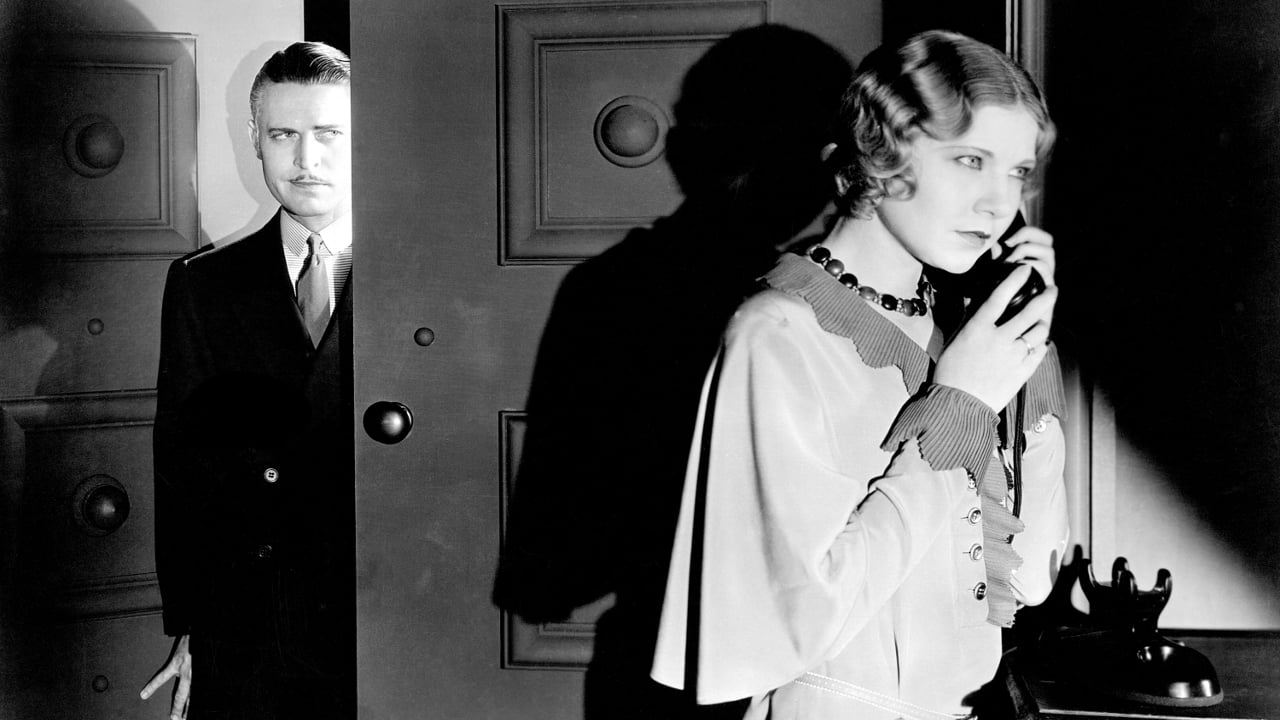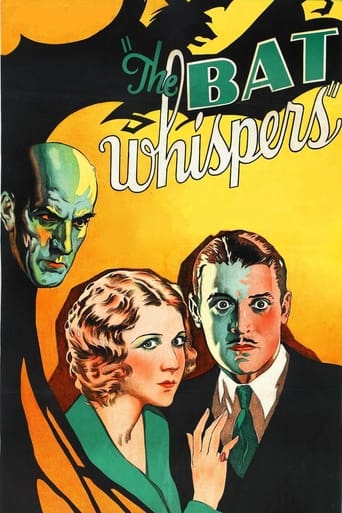



Highly Overrated But Still Good
Brilliant and touching
Pretty good movie overall. First half was nothing special but it got better as it went along.
View MoreGreat movie. Not sure what people expected but I found it highly entertaining.
View MoreWell for heaven's sake, who would have thought that once upon a time Una Merkel would have been considered leading lady material. Not for very long though as the next year, 1931, she played Ricardo Cortez's sexy secretary, Effie, in the original "The Maltese Falcon". She was a discovery of D.W. Griffith who thought she had a Lillian Gish look about her and she did extra work in "Way Down East" and "The White Rose". So when she went to United Artists in 1930 Griffith thought she would be ideal as Ann Rutledge for his "Abraham Lincoln" but it was on a Fox loan out that her brilliant comedy vein was found. In Roland West's talkie remake of his 1926 success "The Bat" she starred alongside "Mr. Versatile" Chester Morris who was already being noted for his anti-hero parts.West certainly tried to experiment with camera shots and sound (much like with his "Alibi" of the previous year) - from the panning shot from the top of the clock tower to the street below, there is a cacophony of noise - sirens, police radios, newsboys jeering at the police's inability to catch the Bat who has just claimed another victim. Most people would be familiar with the plot that centres around the Fleming residence where Miss Van Gorder and her petrified maid (Maude Eburne) pass an eventful night. First visitor is Van Gorder's niece, Dale (Merkel) who brings her boyfriend (William Bakewell), who is disguised as Bailey, a jobbing gardener - in reality he is on the run having been falsely accused of embezzling funds from the bank at which he is a teller. They are both convinced that the missing money is hidden in the house - but in this crazy place no one is who they appear, even the owner, Fleming, is out to find the money for himself and there is also a strange doctor (Gustav Von Seyffertitz) who seems to have a morbid fascination with matches.Keeping the whole movie ticking along is Chester Morris as the mesmerizing, handsome detective Anderson - you just can't take your eyes off him, even though he doesn't make his appearance until 30 minutes after the movie has started. This movie is just terrific fun and trumps the silent one by having a powerful actor in the leading role (Jack Pickford was the star in the original - he played Bailey!!). Bob Kane did get the idea for Batman from the 1926 movie which did have a clearly defined bat's head as a silhouette and also flashed the bat insignia up in the sky - whenever the Bat was about to strike again. "The Bat Whispers" had plenty of atmosphere and frights and the bat costume, when illuminated by shadows, filled the screen - but it was easy to see it was only a costume after all. And the ending was great!! Chester Morris actually comes on to the stage and chats with the audience, asking them not to divulge the ending to their friends!! For a stage trained actor he was a complete natural in front of the camera and you have to scratch your head and wonder why he didn't become a major star. Maybe he was just too good!!!
View MoreA criminal called "The Bat" roams around the mansion house of Cornelia (Grayce Hampton) looking for a secret room with hidden money. We have seen that he has no problem in killing anyone that comes in his way at the beginning of the film but we don't know his identity. A cast of characters appear at the mansion and the story is a "who-dunnit" mystery............. so, who is "The Bat"..?....The film starts well but unfortunately, it goes downhill when the action switches to the mansion house. This is largely due to the overbearingly dreadful maid Lizzie (Maude Eburne) who plays everything for humour and just never succeeds. She is VERY irritating. Of course, one irritating unfunny character isn't enough so we are introduced to 2 more! A butler/house-keeper type who also plays for humour and fails and a detective (Chance Ward) who is also very annoying and very unfunny. These 3 characters are a big part of the reason why this film is rubbish. The other is the story which is dull and complicated and I found myself watching a totally confusing mess. The only good things about the film are some of the camera shots and Grace Hampton who plays her role well. They stick an epilogue on at the end of the film which is really tacky. This film is not good.
View MoreA tour-de-force of chases, shootouts, and robbery, as "The Bat" terrorizes a city, and particularly the renters of a mansion where he makes his hideout. Nearly everybody is a suspect, but the key lighting pretty much gives it away. Nonetheless, West keeps the pace moving so fast that we don't really have time to stop and think about much of anything. Features West's trademark effects with miniatures and wires. Some remarkable photography (in 65mm, no less) in the disappearing silent gothic tradition makes this movie a link from the newly emerging horror scene to the old "haunted house with criminals" genre into which it more properly falls. "Goofy gothic" excellence.
View MoreRoland West first filmed the story of the Bat, a killer that steals money and jewels for their value as well as for adventure, in 1926. He then made The Bat Whispers in 1930, which is a sound version of his silent film. The transition is not entirely smooth yet rewarding. Let me first state that the silent film is easily the superior of the two. The silent film had a much more creepier feeling to it. The acting was far superior, and the sets were incredible. West does duplicate much of the sets and shots that were in his first version. The acting, however, is not very good as it is obvious that sound pictures have not been around too long. West tries to accommodate that new innovation which sometimes results in stagey scenes and long dialogue sessions. Chester Morris is...well, to say the least...a ham. His performance is a bit over-the-top for me. He does show glimmers of talent though. The story is pretty much the same and that is the film's strength. It's a fun mystery that by today's standards will seem crude and silly, but taken in context of its time should provide some entertainment. Oddly enough, the mystery seemed less mysterious in this version. I knew who the killer was with ease(trying to distance myself from the memory of the first film as I did this). West again has some impressive camera shots. The opening scene of the bat stealing a jewel from an apartment high in the sky was incredible as was the journey of the bat over a bank and following a man with a lot of money. The camera work of West is innovative, and it is a pity that his life was cut short and we did not get a chance to see him employ his talents in other projects.
View More